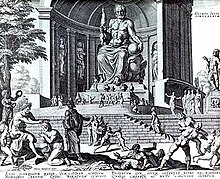426
Appearance
This article needs additional citations for verification. (September 2020) |
| Millennium: | 1st millennium |
|---|---|
| Centuries: | |
| Decades: | |
| Years: |
| 426 by topic |
|---|
| Leaders |
| Categories |
| Gregorian calendar | 426 CDXXVI |
| Ab urbe condita | 1179 |
| Assyrian calendar | 5176 |
| Balinese saka calendar | 347–348 |
| Bengali calendar | −168 – −167 |
| Berber calendar | 1376 |
| Buddhist calendar | 970 |
| Burmese calendar | −212 |
| Byzantine calendar | 5934–5935 |
| Chinese calendar | 乙丑年 (Wood Ox) 3123 or 2916 — to — 丙寅年 (Fire Tiger) 3124 or 2917 |
| Coptic calendar | 142–143 |
| Discordian calendar | 1592 |
| Ethiopian calendar | 418–419 |
| Hebrew calendar | 4186–4187 |
| Hindu calendars | |
| - Vikram Samvat | 482–483 |
| - Shaka Samvat | 347–348 |
| - Kali Yuga | 3526–3527 |
| Holocene calendar | 10426 |
| Iranian calendar | 196 BP – 195 BP |
| Islamic calendar | 202 BH – 201 BH |
| Javanese calendar | 310–311 |
| Julian calendar | 426 CDXXVI |
| Korean calendar | 2759 |
| Minguo calendar | 1486 before ROC 民前1486年 |
| Nanakshahi calendar | −1042 |
| Seleucid era | 737/738 AG |
| Thai solar calendar | 968–969 |
| Tibetan calendar | 阴木牛年 (female Wood-Ox) 552 or 171 or −601 — to — 阳火虎年 (male Fire-Tiger) 553 or 172 or −600 |

Year 426 (CDXXVI) was a common year starting on Friday of the Julian calendar. At the time, it was known in Rome as the Year of the Consulship of Theodosius and Valentinianus (or, less frequently, year 1179 Ab urbe condita). The denomination 426 for this year has been used since the early medieval period, when the Anno Domini calendar era became the prevalent method in Europe for naming years.
Events
[edit]By place
[edit]Europe
[edit]- Flavius Aetius, Roman general (magister militum), ends the Gothic revolt of Theodoric I in southern Gaul.[1]
- Rex Flavius Gundericus of the Vandals accepts the request of the Alans in Hispania to become their ruler (approximate date).[citation needed]
Mesoamerica
[edit]- K'inich Yax K'uk' Mo' becomes the founder of the pre-Columbian Maya civilization at Copán (modern Honduras).
Religion
[edit]- Augustine of Hippo publishes the De Civitate Dei, City of God.
- Sisinnius becomes Archbishop of Constantinople.[2]
Births
[edit]- Liu Shao, emperor of the Liu Song Dynasty (d. 453)
Deaths
[edit]- Fu Liang, official of the Liu Song Dynasty (b. 374)
- Xie Hui, general of the Liu Song Dynasty (b. 390)
- Xu Xianzhi, official of the Liu Song Dynasty (b. 364)
- Zhang, empress dowager of the Liu Song Dynasty
